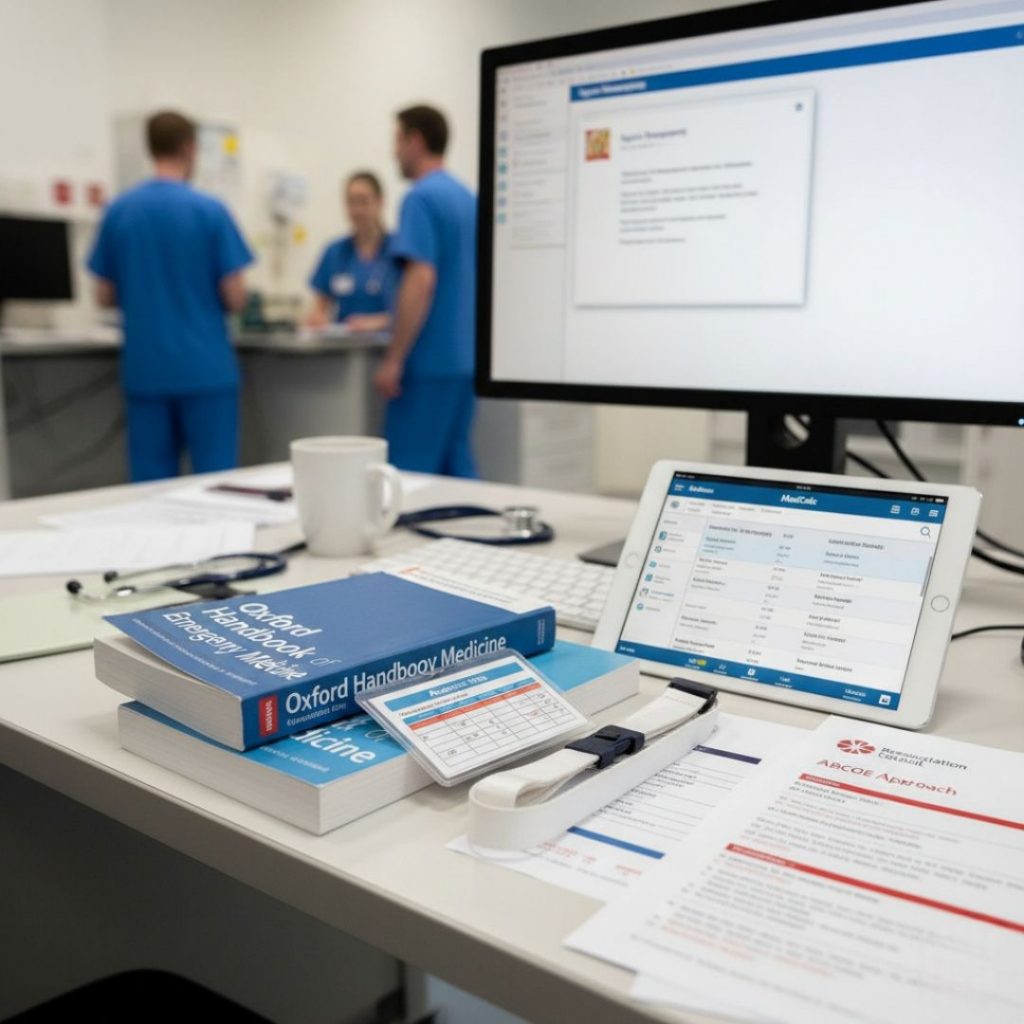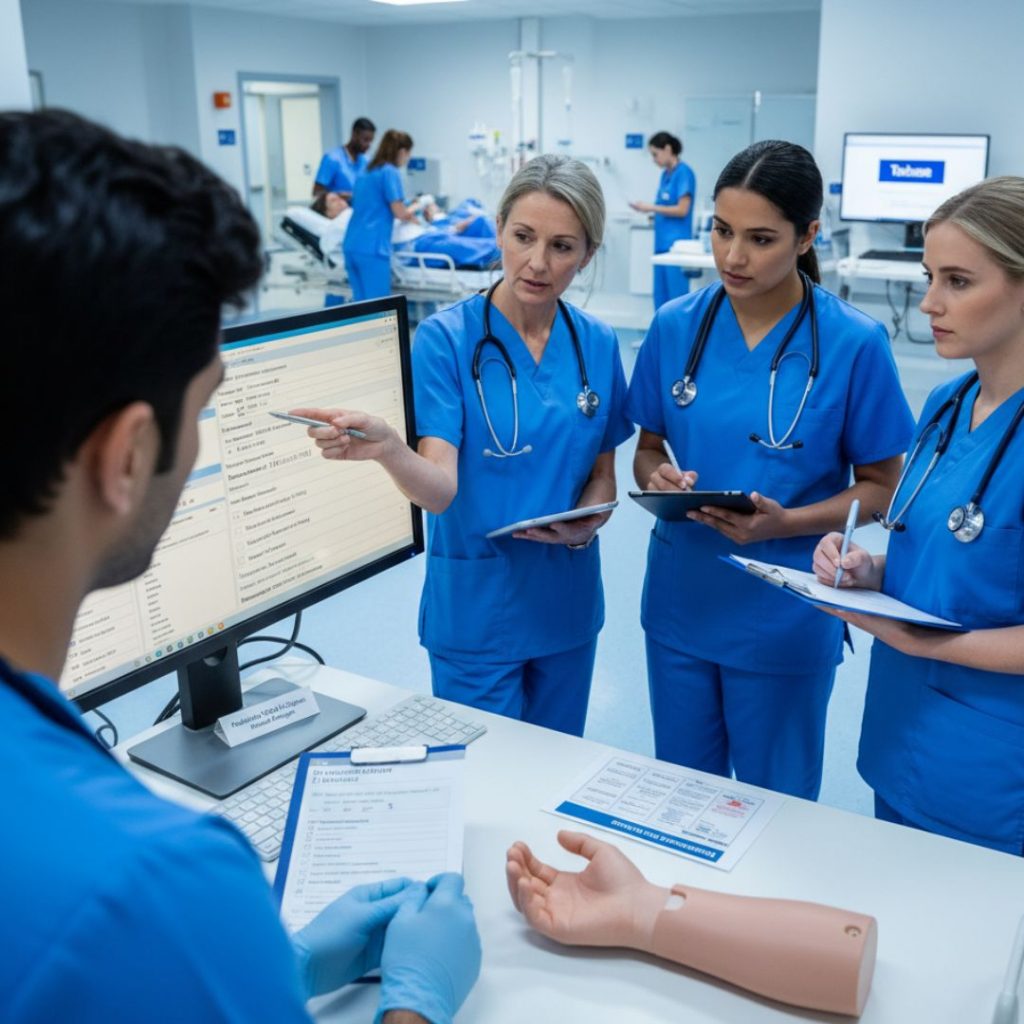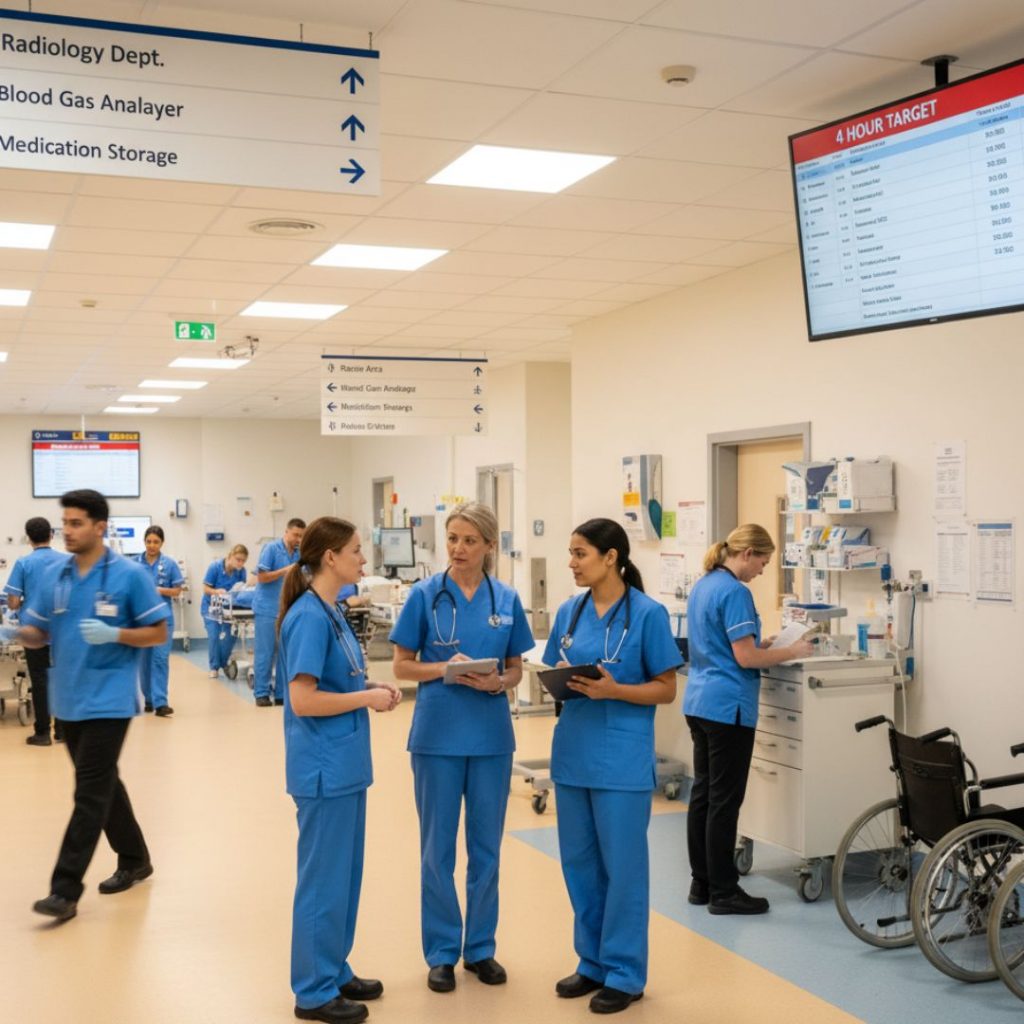The emergency department (ED) can be one of the busiest rotations, but also provides a multitude of exciting learning experiences. It is normal to be nervous when starting a new rotation, but by being organised and proactive, you are more likely to gain an enriching experience in emergency medicine.. In this article, Dr Bibiana Aiyegbeni shares 10 tips to help you get the most out of your rotation.

1. Useful resources:
–Oxford Handbook of Emergency Medicine: for revision of common emergencies you are likely to see in the ED, including acute coronary syndrome, stroke, diabetic ketoacidosis, sepsis, and anaphylaxis.
-Local hospital guidelines used in Emergency medicine for common conditions such as management of acute coronary syndrome, sepsis, hypoglycaemia, anaphylaxis and electrolyte imbalances.
-Resuscitation council guidelines on anaphylaxis, basic life support and choking for children and adults- https://www.resus.org.uk/professional-resources; Rapid clinical assessment using the ABCDE approach (Airway, Breathing, Circulation, Disability, Exposure) – https://www.resus.org.uk/library/abcde-approach
–Medcalc website/app- provides a risk stratification calculator for common conditions such as Wells score, (Deep Venous thrombosis), PERC rule (to exclude pulmonary embolism), Centor score (for Strep pharyngitis) and CURB65 (pneumonia).
–Normal ranges for Paediatric vital signs– Always carry a small card with normal ranges for paediatric vital signs (e.g., BP, respiratory rate, heart rate)..
2. Develop skills on taking focused clinical histories.
This will be based on the main presenting complaint from the patient. Books like Symptom sorter can help you with conducting a focused clinical assessment with patients. Sometimes patients may raise chronic health issues; try to signpost them back to their GP and/or note this in the discharge summary for GP follow-up.
3. Learn as much as you can!!
Try to get clinical exposure to all areas of the ED from paediatric ED to resus area regardless of your competence and specialty choice; this will give you a broader view of how ED works. Do not be afraid to raise this with clinical supervisor if you are not getting much clinical exposure in certain ED areas. Some rotas may enable you to be able to float between different areas in ED as a way of increasing your clinical exposure.
Do not be afraid to ask if unsure of things. Make friends with the nurses as they are more likely to help you do certain tests in a timely manner, such as bladder scans, urine dipsticks, vital signs, and 12-lead ECGs. Also try to learn how to do some of the tests as often the nurses may be too busy to do this for the patient in a timely manner.

4. Documentation.
You will learn how to quickly and concisely document in patient’s records and discharge summaries. This includes documenting when you assessed the patient, discussed plans with colleagues, and administered oral medication (e.g., paracetamol). Often your colleagues may rely on your documentation to find out the management plan for patients, if you are not available. If handing over patients to a fellow doctor, always document in the patient’s notes which doctor you have handed the patient over to.
5.Make the most of induction sessions.
This will enable you to learn how the ED department is structured and systems that are in place. During the induction sessions, try to sort your access to computer systems and equipment such as blood gas analysers, and codes to access specific doors/cupboards. During these sessions, you can also learn from others who have done the role, so you can obtain some useful practical tips from them on performing the usual duties.
Usual duties include:
Assessing acute unwell patients from those with acute confusion, acute mental health crisis, chest pain, suspected stroke, acute abdomen, fractures, pneumonia and asthma/COPD exacerbation.
When assessing patients who may have taken toxins or overdosed, Toxbase is a useful online resource to guide management.
Assessing an acutely unwell child and liaising with their parents/guardians, paediatric nurses and paediatricians. This includes the assessment and management of common infections (e.g., bronchiolitis, asthma, croup, UTI) using the ABCDE approach. Also, this may lead to potential safeguarding issues which you may need to detect and act on.
Requesting, interpreting and making decisions based on urgent tests including blood tests, x-rays and CT scans
Arranging/performing and interpreting 12 lead electrocardiograms for patients
Generating discharge summaries for patients including giving patients’ medications to take home such as analgesia and anti-sickness medications.
Liaising with ED nurses and other ED doctors to aid patient care including handing over patient cases.
Referring ED patients to other specialists including medical registrar, general surgeons and stroke doctors.
Discussing urgent imaging requests with radiologists and be willing to ask if it is unclear why a test needs to be done.
Venepuncture and cannula insertion +/- performing arterial or venous blood gases and interpreting the results in a timely manner.
Wound management including cleaning and wound closure including suturing skills
Opportunity to participate in the management of common fractures including how to insert a plaster of Paris, performing nerve blocks, prescribing appropriate analgesia and reduction of fractures.
Opportunity to observe and/or participate in the process of Rapid sequence intubation for patients that need urgent intubation to gain rapid control of the airway.

6.Be an active team player!!
The ED can be very busy so working in a supportive team environment is vital. Knowing the names of key team members such as the physician in charge, nurse in charge, health care assistants, triage nurses and receptionists will go a long way to feeling part of the team.
Also, effective and continuous communication with your colleagues is required to succeed in this rotation. This includes updating the nurse who is looking after your patients on the management plan as soon as possible, especially as you may see another patient in a different area of the department. If this is part of the system, you can update the plan on the patient’s computer records, so your colleagues are aware. Also using a structured system such as SBAR (Situation, Background, Action and Recommendation) format to handover patients to nurses and fellow doctors can be beneficial. Also, it is important to inform your senior colleagues when you are taking a break, so they are aware..
7. Familiarise yourself with where things are kept in/near the department.
This includes knowing the sites of the following: radiology department, resus area, blood gas analysers, sluice rooms, wheelchairs, cannula/venepuncture kits, resus trolley, 12 lead ecg machines and medication storage. It is best to try to learn this in induction sessions. This will save you time and help to reduce stress levels whilst working in a busy department.
8. Learn to develop good time management skills.
You will be seeing many patients with a variety of conditions. Depending on the ED you are in, there may be guidance to try to assess and treat a patient within 4 hours. Be mindful of the time you start seeing patients and how long the patient has been in the ED. this may also include multitasking, such as taking a clinical history while inserting a cannula and performing venepuncture for the same patient, to save time.

Also, having a system for keeping track of patients you are actively seeing, for example after requesting a test for your 1st patient, see another patient then check on the requested test for the 1st patient. Try not to see too many patients at once as it may be difficult to keep track of the patients including chasing the relevant test results in a timely manner.
9. Create Personal Development plans in the first month of the rotation.
Suggested Personal Development Plans (PDP) include:
To become confident in performing and interpreting 12 lead ECGs
To become confident in assessing acute confusion in patients
To become confident in the assessment of an acutely unwell child
To learn how to suture simple wounds
10.Try to always be polite and respectful to all patients and relatives. Some patients may be rude to you or your colleagues for various reasons, such as intoxication, severe pain, or frustration with long waiting times. The ED can be a frightening place for some patients and be pressured in terms of time and large number of patients waiting to be seen by a doctor. You may get patients in the waiting area asking you when they will be seen, so politely signposting them to the receptionist is usually helpful.


